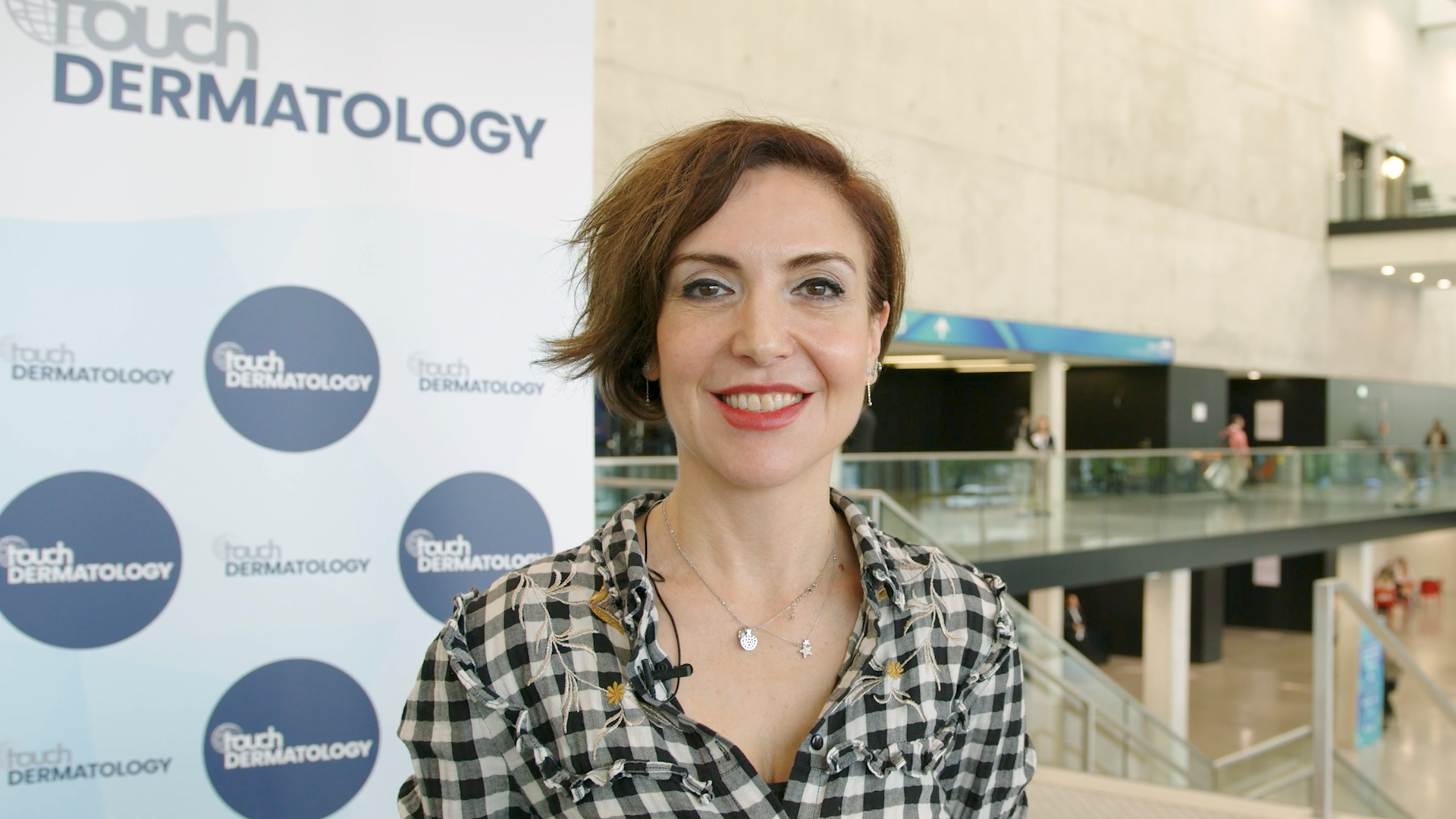touchDERAMTOLOGY coverage from EADV 2024:
Barzolvolimab, is an anti-KIT monoclonal antibody, currently under investigation for the treatment of chronic spontaneous urticaria (CSU). Building on the promising results delivered from the initial 12-week trial, we now turn to key findings from the 52-week extension study, which evaluates the drug’s longer-term efficacy and safety.
Following his presentation at the 2024 EADV Congress, we spoke with Prof. Martin Metz (Charité Institute of Allergology, Berlin, Germany) the lead presenter of the study, to discuss these long-term findings and their potential impact on those living with CSU. Prof. Metz also shares his forward-looking insights on how barzolvolimab could be integrated into the future landscape of chronic urticaria management.
Associated abstract: Maurer M, et al. Barzolvolimab shows profound efficacy and favorable safety over 52 weeks in patients with chronic spontaneous urticaria. Presentation ID D1T01.2D, EADV 2024
Questions:
- What did the phase 2, 12-week data reveal about barzolvolimab’s potential for treating CSU?
- What was the aim and design of the long-term extension of this trial?
- What were the key efficacy and safety findings from this long-term study?
- How do the findings impact our understanding of barzolvolimab’s potential in clinical practice?
- What will be the next steps towards realising the potential of barzolvolimab in CSU?
Disclosures: Martin Metz discloses consultancy, advisory board participation and honoraria from AbbVie, Advanz, Almirall, Amgen, ArgenX, AstraZeneca, Astria, Bayer, Beiersdorf, Boxer Capital, Celldex, Celltrion, Deep Apple, Escientpharma, Galderma, GSK, Incyte, Jasper Therapeutics, Novartis, Pharvaris, Pfizer, Proinnovera, Sanofi-Aventis, SantaAnaBio, Septerna, Tevapharm, ThirdHarmonicBio, Tupos, Viforpharma and Ysios.
This content has been developed independently by Touch Medical Media for touchDERMATOLOGY. It is not affiliated with the European Academy of Dermatology and Venereology (EADV). Unapproved products or unapproved uses of approved products may be discussed by the faculty; these situations may reflect the approval status in one or more jurisdictions. No endorsement of unapproved products or unapproved uses is either made or implied by mention of these products or uses by Touch Medical Media or any sponsor. Views expressed are the speaker’s own and do not necessarily reflect the views of Touch Medical Media.
Transcript:
Hello my name is Martin Metz from Berlin from the Institute of Allergology at the Charité University of Medicine.
Q: What did the phase 2, 12-week data reveal about barzolvolimab’s potential for treating CSU?
Patients that were included in the 12-week placebo-controlled phase 2 data were CSU patients, refractory to antihistamine treatment. And other than that, it was an all-comers study. That means, patients with omalizumab failure were included as well.
So, what the study showed was that the primary endpoint was met. There was an excellent and significant difference between the placebo and all the doses that were used in this trial. And the response was seen in patients that did fail omalizumab prior to treatment and in those that did not.
Q: What was the aim and design of the long-term extension of this trial?
There’s various questions to be asked. So, it’s a safety and tolerability [trial], which is important to know for a longer treatment period. So, more applications of the drug and overall, long-term treatment of up to one year.
The other is, of course, also the efficacy. So after 16 weeks of the placebo-controlled period of treatment, patients were re-randomized to two arms, 150 mg every four weeks and 300 mg every eight weeks. So there’s now a lot more data on these two different treatment regimes for the long term.
So, this trial was basically done to get long-term efficacy data for 150 mg and 300 mg every eight weeks and to get long-term safety and tolerability of this drug.
Q. What were the key efficacy and safety findings from this long-term study?
To, see and hear, this is what we really saw happening in these 52 [weeks]. So all those patients that came from placebo or from the low-dose 75 mg, they improved just like it was seen before in the placebo-controlled trial phase. So it was a rapid improvement. And overall, it went down in the 150 mg every four weeks to around or below, a UAS7 of six, which is considered to be a controlled state of the disease.
So excellent efficacy. Regarding safety, we saw basically the same things as were seen before in the 12 week [data], at the 12 week endpoint of the placebo-controlled trial. So that, on the one hand, is encouraging because there’s nothing really new that comes up. And this is especially important for the neutropenia, which we do see in the placebo-controlled phase, so in the 12 week phase. And we see it do the same rate also later on. So it’s not, it doesn’t seem to be an additive effect, which is indeed important. The hair colour changes that we have seen before, within the 12 weeks, that’s something that we also see in the long-term extension. So, again, something that didn’t change.
The one thing that did change, was that in a few patients, in the long-term 52 week extension period, there was also skin hypopigmentation seen. So that was something that in the shorter duration of the 12 week trial was not seen and is something that apparently can occur with a long-term treatment.
Q. How do the findings impact our understanding of barzolvolimab’s potential in clinical practice?
The data that was presented really shows that we have with this drug and with potential future drugs that target, KIT, certainly a very potent drug at our hands.
So the efficacy that we see, so it’s going up to a 70 percent complete response rate. No more signs and symptoms in any patient can be achieved with this. This is something that we haven’t seen before, and this rate of efficacy is something that is comforting for us so that we will have something in the future possibly.
We, of course, have to weigh the adverse events that we have seen. So it will not replace antihistamines.
You know, it will not be first-line treatment, but it will offer a new highly-effective treatment opportunity.
Q: What will be the next steps towards realising the potential of barzolvolimab in CSU?
So next is, of course, a phase 3 trial, and this is planned and, in the beginning, already. This is important. We need these phase 3 trials to get the final efficacy data and, and even more safety data than we have at the moment. So this is now, at the moment, the most important to get phase 3 data, to have the chance to talk to regulators and get this approved at some point. The other very interesting aspect of barzolvolimab treatment is also in chronic inducible urticaria.
So the trial that has been reported now was phase 2 in CSU. Phase 3 will come. But we also have data on the phase 2 in chronic inducible urticaria, and this will be presented later this year, and beginning of next year, at meetings. And this is an important aspect because in chronic induced urticaria, we don’t have anything apart of antihistamines at the moment, and our patients do need treatment. So here we also have a possibility, hopefully, with this drug.
Interviewer/Editor: Gina Furnival
Cite: Metz M. Barzolvolimab shows sustained efficacy over 52 weeks in antihistamine-refractory chronic spontaneous urticaria. touchDERMATOLOGY. October 3, 2024.





